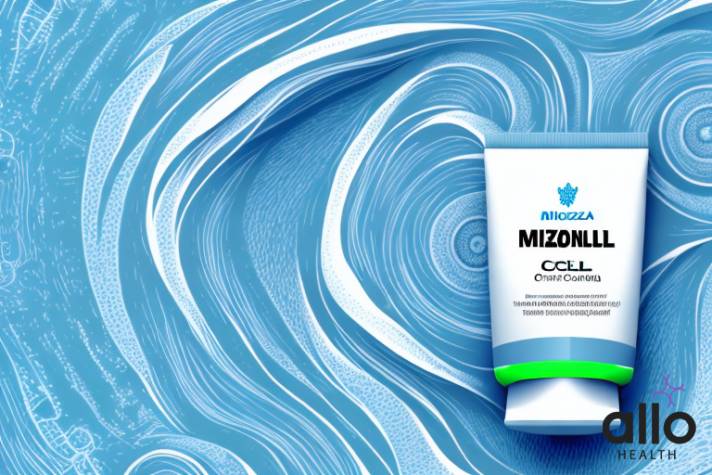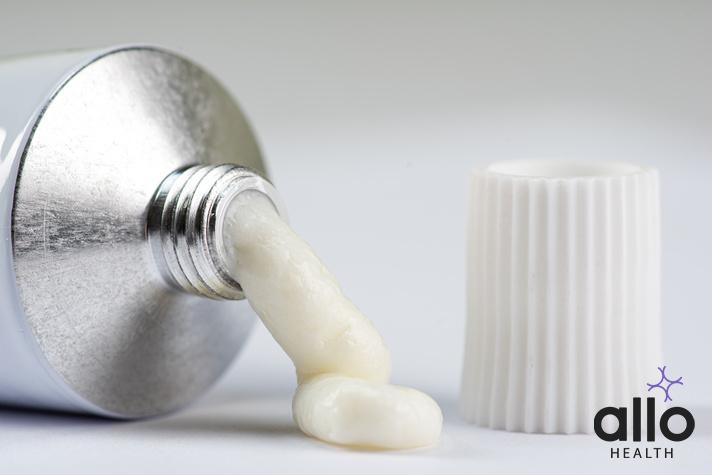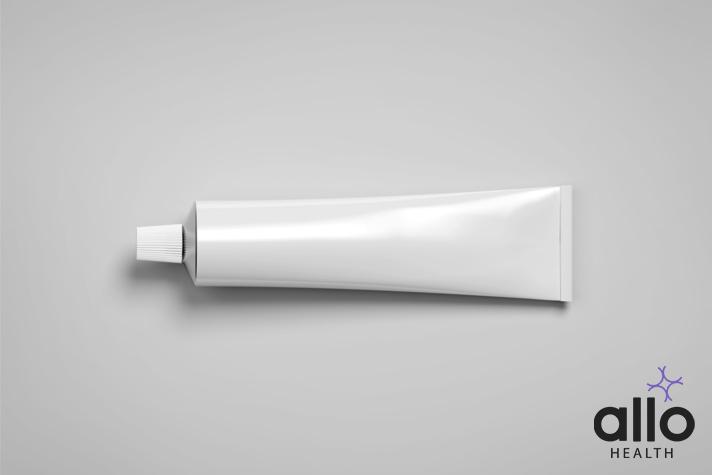What Is Miconazole Cream?

Allo Health is dedicated to personalized well-being, offering support and trusted information tailored to individual health goals. The platform emphasizes human-generated content, led by a distinguished medical team of experts, including physicians and sexual health specialists. Their commitment to credibility involves rigorous fact-checking, authoritative research, and continuous updates to ensure accurate, up-to-date information. Allo Health's unique approach goes beyond conventional platforms, providing expert-led insights and a continuous commitment to excellence, with user feedback playing a crucial role in shaping the platform's authoritative voice.

Dr Sanina Mansoor holds MBBS degree from Yenepoya university,Mangalore.She has 8 years of experience working as a medical officer at various health centres and medical colleges.
Why This Was Upated?
Our experts continually monitor the health and wellness space, and we update our articles when new information became available.
Updated on 19 February, 2024
- Article was updated as part of our commitment to diversity, equity, and inclusion.

"The following blog article provides information about a drug or brand name drug and its potential effects or benefits. However, it is crucial to understand that this information is intended for general educational purposes only and should not be considered a substitute for professional medical consultation. It is highly recommended to consult with a qualified healthcare professional before making any decisions regarding medication, treatment, or healthcare management.
Book consultation
Individuals have unique medical conditions, and the information provided in this article may not be applicable to everyone. Only a qualified healthcare provider can evaluate your specific medical situation, taking into account your medical history, conducting appropriate tests, and providing personalized advice and recommendations. They are equipped to make informed decisions tailored to your individual needs.
It is crucial to emphasize that self-diagnosis, self-medication, or disregarding medical advice can have serious health consequences. This article may reference specific brand names or drugs for illustrative purposes. Mention of these names does not imply endorsement, recommendation, or guarantee of their efficacy or safety. The choice of medication should be based on discussions and individualized guidance from a healthcare professional who has a comprehensive understanding of your medical condition.
"Fungal infections are a common concern that affects millions of people each year. From athlete’s foot to jock itch, these infections can cause discomfort, embarrassment, and even pain. Fortunately, there are many treatments available to help manage and treat fungal infections, one of which is Miconazole cream. In this article, we will explore the use of Miconazole cream for effective treatment of fungal infections.
Miconazole Cream Uses And Benefits
Miconazole is an antifungal medication commonly used topically to treat various fungal infections of the skin. It belongs to the azole class of antifungal drugs and works by inhibiting the synthesis of ergosterol, a crucial component of the fungal cell membrane. Miconazole is available in different formulations, including creams, powders, sprays, and ointments. Here are some details about the uses and benefits of miconazole cream:
- Treatment of Fungal Infections:
- Athlete’s Foot (Tinea Pedis): Miconazole cream is often used to treat athlete’s foot, a common fungal infection that affects the skin between the toes and the soles of the feet.
- Jock Itch (Tinea Cruris): It is effective in treating jock itch, a fungal infection that affects the groin and inner thighs.
- Ringworm (Tinea Corporis):
- Miconazole cream is used for the treatment of ringworm, a fungal infection that can occur on various parts of the body, leading to red, itchy, and circular rashes.
- Yeast Infections:
- Miconazole cream can be used to treat yeast infections, including vaginal yeast infections (vulvovaginal candidiasis) in women.
- Diaper Rash:
- In some cases, miconazole cream may be recommended for the treatment of diaper rash caused by a yeast infection in infants.
- Other Fungal Infections:
- Miconazole may also be prescribed for other localized fungal infections, depending on the specific diagnosis and the recommendation of a healthcare professional.
Benefits:
- Effective Antifungal Action: Miconazole is known for its broad-spectrum antifungal activity against various types of fungi.
- Symptomatic Relief: It helps relieve symptoms associated with fungal infections, such as itching, redness, and discomfort.
- Convenience of Topical Application: Creams are easy to apply topically to the affected area, making them a convenient choice for localized fungal infections.
Usage Tips:
- Follow the prescribed dosage and duration recommended by your healthcare provider.
- Clean and dry the affected area before applying the cream.
- Wash hands thoroughly after application.
- Avoid applying the cream in or around the eyes, nose, or mouth unless directed by a healthcare professional.
It’s essential to consult with a healthcare provider before using any medication, including miconazole cream, to ensure proper diagnosis and treatment. If symptoms persist or worsen, medical advice should be sought.

Miconazole Cream Dosage
The dosage of miconazole cream can vary based on the specific condition being treated, the formulation of the product, and individual factors. It’s crucial to follow the healthcare provider’s instructions and the instructions provided on the medication packaging. Below are general guidelines for the use of miconazole cream, but it is essential to consult a healthcare professional for personalized advice:
- Athlete’s Foot (Tinea Pedis), Jock Itch (Tinea Cruris), and Ringworm (Tinea Corporis):
- Apply a thin layer of miconazole cream to the affected area and the surrounding skin.
- The cream is usually applied once or twice daily, depending on the severity of the infection and the specific product used.
- Treatment may typically last for 2 to 4 weeks, but it’s important to continue using the medication for the full duration prescribed by the healthcare provider, even if symptoms improve before that.
- Vaginal Yeast Infections (Vulvovaginal Candidiasis):
- For vaginal use, miconazole cream is typically supplied with applicators for easier and more precise application.
- The usual dosage is a once-daily application, usually before bedtime.
- Treatment duration may vary but is often prescribed for 3 to 7 days.
- It is important to follow the healthcare provider’s recommendations regarding the specific product and treatment duration.
- Diaper Rash (Yeast Infection in Infants):
- Apply a thin layer of miconazole cream to the affected diaper area during each diaper change.
- The frequency and duration of application may vary, and it’s important to follow the healthcare provider’s guidance.
General Tips:
- Clean and dry the affected area before applying miconazole cream.
- Wash hands thoroughly after applying the cream.
- Avoid using more than the recommended amount unless directed by a healthcare professional.
- If using an applicator for vaginal administration, follow the provided instructions carefully.
It’s essential to inform your healthcare provider about any other medications or medical conditions you have before using miconazole cream. If there are any concerns or if symptoms persist or worsen, seek medical advice promptly. Additionally, pregnant or breastfeeding individuals should consult their healthcare provider before using any medication.
Miconazole Cream Side Effects and Precautions
Miconazole cream is generally considered safe when used as directed, but like any medication, it can have potential side effects and precautions that should be considered. It’s important to follow the healthcare provider’s recommendations and guidelines for use. Here are details about potential side effects and precautions associated with miconazole cream:
Common Side Effects:
- Skin Irritation: Some individuals may experience mild irritation, redness, itching, or a burning sensation at the application site. If these symptoms persist or worsen, it’s advisable to consult a healthcare professional.
Less Common Side Effects:
- Allergic reactions are rare but possible. Seek medical attention if you experience signs of an allergic reaction, such as rash, itching, swelling, severe dizziness, or difficulty breathing.
Precautions:
- Allergies:
- Inform your healthcare provider about any known allergies or sensitivities, especially to antifungal medications or other azole drugs.
- If you have had an allergic reaction to miconazole or any similar antifungal medications in the past, let your healthcare provider know.
- Pregnancy and Breastfeeding: Pregnant or breastfeeding individuals should consult their healthcare provider before using miconazole cream. The provider will weigh the potential benefits against any possible risks.
- Medical History: Provide a complete medical history to your healthcare provider, including any current medications, medical conditions, or ongoing treatments.
- Avoid Contact with Eyes, Nose, and Mouth: Take care to avoid contact with the eyes, nose, mouth, and other mucous membranes. If accidental contact occurs, rinse thoroughly with water.
- Use in Children: Miconazole cream is generally considered safe for use in children, but it’s important to follow the healthcare provider’s guidance on dosage and application.
- Other Medications: Inform your healthcare provider about any other medications you are currently taking, including over-the-counter drugs, supplements, or herbal products, as they may interact with miconazole.
- Complete Treatment Course: Finish the full course of treatment as prescribed by the healthcare provider, even if symptoms improve before completion. Prematurely stopping treatment may allow the infection to persist or return.
- Consultation with Healthcare Provider: If there are any concerns, side effects, or if symptoms persist or worsen, consult your healthcare provider promptly.
It’s essential to use miconazole cream under the guidance of a healthcare professional to ensure appropriate diagnosis, treatment, and monitoring. While side effects are uncommon, individual responses to medications can vary, and seeking medical advice is crucial for a safe and effective treatment experience.

Miconazole Cream Drug Interactions
Miconazole cream, when used topically, generally has limited systemic absorption, which can minimize the potential for drug interactions compared to oral medications. But, it’s still important to inform your healthcare provider about all medications, including over-the-counter drugs, supplements, and herbal products, to ensure there are no potential interactions. Here are some considerations regarding drug interactions with miconazole cream:
- Warfarin (Coumadin): There have been reports of increased anticoagulant effects (blood-thinning) when miconazole is used concurrently with warfarin. It’s important to monitor the International Normalized Ratio (INR) closely if these medications are used together.
- Calcineurin Inhibitors (Tacrolimus, Pimecrolimus): There may be a potential for increased absorption of calcineurin inhibitors when used concomitantly with miconazole. Close monitoring and adjustment of calcineurin inhibitor dosage may be necessary.
- Corticosteroids: Combining miconazole cream with topical corticosteroids may increase the risk of skin atrophy (thinning) and other local side effects. If both medications are prescribed, they are often applied at different times, with a sufficient interval between applications.
- Other Antifungal Medications: Using multiple antifungal medications simultaneously may not necessarily increase efficacy and could potentially increase the risk of adverse effects. Combining different antifungals should be done under the guidance of a healthcare professional.
- HIV Protease Inhibitors: Some HIV protease inhibitors may interact with miconazole. It’s essential to inform your healthcare provider if you are taking any medications for HIV or other viral infections.
- Oral Hypoglycemic Agents or Insulin: Although the risk is low, there have been reports of changes in blood glucose levels in patients using miconazole. Close monitoring of blood glucose is recommended when using miconazole cream in diabetic patients.
It is important to note that these interactions are more likely to occur with systemic (oral or injectable) forms of medications rather than topical creams. The limited absorption of miconazole when applied topically reduces the likelihood of significant systemic interactions.
Always consult with your healthcare provider before starting, stopping, or changing the dosage of any medication. This information is not exhaustive, and individual responses to medications can vary. Your healthcare provider will consider your complete medical history and medications to provide personalized advice/
Most Asked Questions
-
What is miconazole cream used for?
Miconazole cream is primarily used to treat fungal infections of the skin. It is effective against conditions such as athlete's foot, jock itch, ringworm, and yeast infections. The cream works by inhibiting the growth of fungi and providing relief from associated symptoms like itching and redness.
-
How do I apply miconazole cream for athlete's foot?
For athlete's foot, clean and dry the affected area before applying a thin layer of miconazole cream. It is typically applied once or twice daily, and it's important to continue the treatment for the full duration recommended by your healthcare provider, even if symptoms improve before completion.
-
Can miconazole cream be used for vaginal yeast infections?
Yes, miconazole cream can be used for vaginal yeast infections. It is usually supplied with applicators for easy and precise application. The recommended dosage is typically a once-daily application, preferably before bedtime, for a duration specified by your healthcare provider.
-
Are there any potential side effects of miconazole cream?
Common side effects of miconazole cream may include mild skin irritation, redness, itching, or a burning sensation at the application site. Serious allergic reactions are rare but possible. If you experience signs of an allergic reaction, such as rash or difficulty breathing, seek medical attention promptly.
-
Can miconazole cream interact with other medications?
While miconazole cream, when used topically, has minimal systemic absorption, interactions can occur. It's crucial to inform your healthcare provider about all medications, including over-the-counter drugs and supplements, to ensure there are no potential interactions. Close monitoring may be necessary when using miconazole with drugs like warfarin, calcineurin inhibitors, or certain HIV protease inhibitors. Always consult your healthcare provider for personalized advice.






































